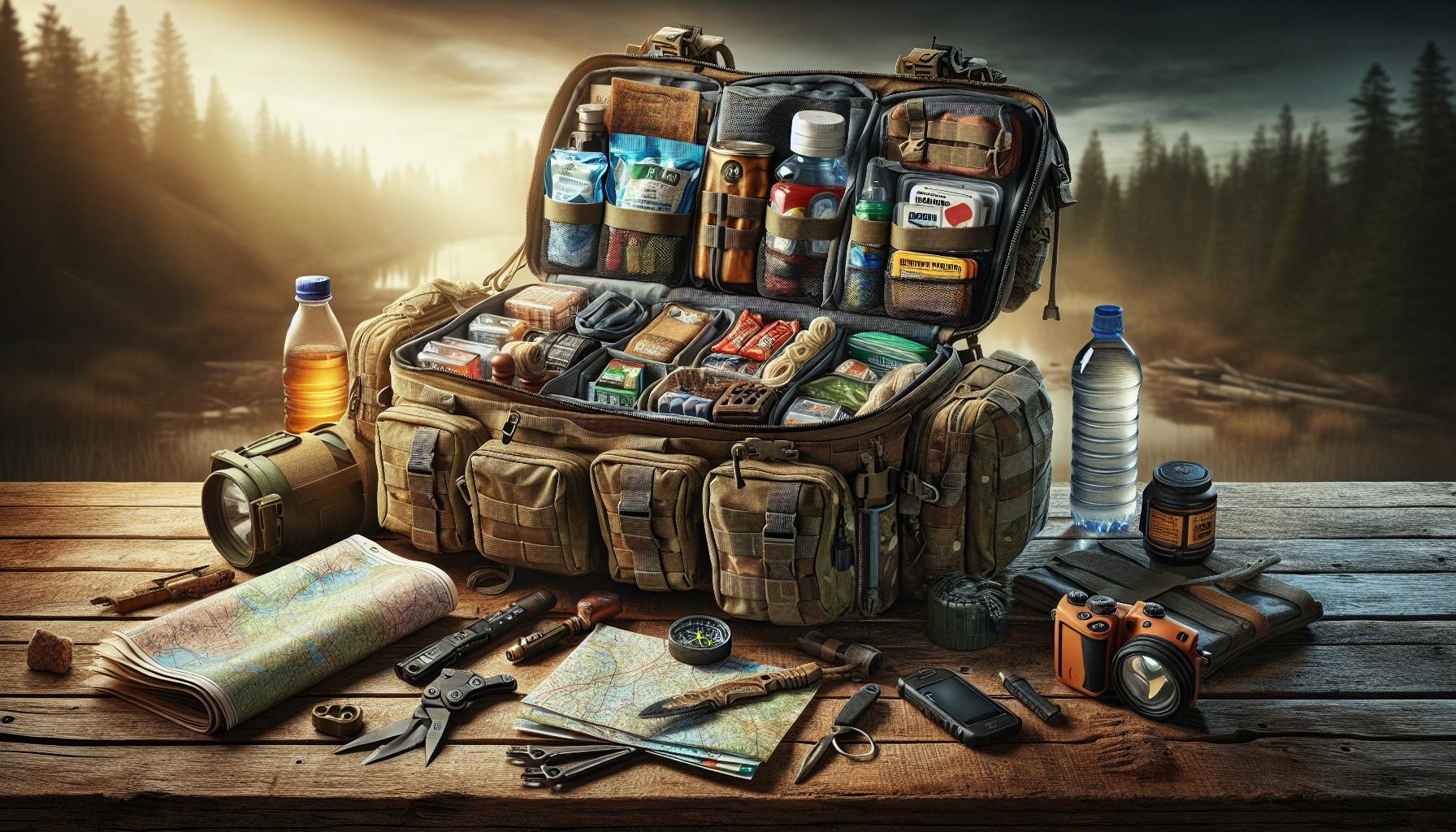Introduction to Prepping for SHTF
When most people think of prepping, they imagine doomsday bunkers, years of food storage, and isolation from society. But in reality, prepping is simply about being proactive and self-reliant in order to handle emergencies calmly and effectively. For beginners, prepping is all about having a plan and some basic supplies on hand so you're not caught off guard when disaster strikes. Proper prep for shtf (stuff hits the fan) situations reduces panic and greatly improves chances of survival. This guide will walk through the basics of getting started with prepping step-by-step.
Defining SHTF Situations
SHTF stands for "stuff hits the fan" and refers to any disaster or emergency that disrupts normal life. Common SHTF scenarios include natural disasters like earthquakes, hurricanes, and floods, as well as man-made disasters such as electrical grid failures, economic collapse, pandemic outbreaks, and civil unrest. Prepping involves making advance preparations to mitigate and endure potential SHTF situations. Having emergency supplies and survival skills in place ahead of time allows one to respond appropriately and handle challenges when SHTF. Some real-world examples of SHTF events include Hurricane Katrina, the COVID-19 pandemic, the Texas power grid failure during the 2021 winter storm, and the collapse of Venezuela's economy.
Beginner Prepper Mindset
As a beginner prepper, it's important to adopt a proactive mindset focused on self-reliance and preparedness rather than fear. The goal is not to panic when SHTF, but to remain calm and utilize your emergency plans and supplies effectively. Prepping should empower you to handle disasters through proper planning and practice. Over time, your goal is to build greater resiliency and ability to provide for yourself and others. Beginner prepping is as much about peace of mind as it is about tangible supplies. Know that every step you take towards preparedness makes you more self-sufficient and better equipped to deal with emergencies.
Creating Your Preparedness Plan
The foundation of solid prep for shtf situations is having a written preparedness plan to guide your efforts. Start by identifying the most likely risks and potential disaster scenarios for your region. Establish emergency contacts and designate meet up locations in case you get separated from family. Set priorities for preparedness goals based on probability and impact. Ensure your plan covers key elements like evacuation routes, shelter options, communications backup, survival kit contents, and any special needs for family members.
Assessing Your Needs and Risks
Consider your family’s or group’s special needs like prescription medications, infant formula, or dietary restrictions when prepping. Research your region to determine high probability and high impact risks like earthquakes, power outages, cyber attacks, or supply chain disruptions. Evaluate your current level of preparedness honestly to identify gaps and vulnerabilities. Get input from everyone in your household when making a plan to ensure all needs are accounted for.
Establishing Contacts and Meeting Points
Designate both nearby and out-of-town emergency contacts who can relay information if local communications fail. Pick locations close to home and farther away as rally points in case you get separated. Share key contacts, meeting spots, network passwords, and other essential information with all household members. Have printed copies in case phones are unavailable. Ensure all family members have memorized meeting places and emergency contacts as a contingency.
Building Your Prepper Supplies
Experts recommend having at least 2 weeks worth of supplies for your household readily available. Focus on stocking up on food, water, first aid items, tools, hygiene products, and other essentials. Also store extra fuel, batteries, cash, and barter items. Properly storing your supplies and rotating stock helps ensure they’ll be usable when needed. Here’s a basic starting list of supplies to have on hand.
Food and Water
Aim for at least 2 gallons of water per person per day for drinking and sanitation needs. Stock up on long shelf-life, nutritious foods like rice, beans, canned goods, honey, and freeze-dried meals. Include a manual can opener, mess kits, and other tools for food prep when the power is out. Store additional water as well as water filtration devices like LifeStraws and water purification chemicals like calcium hypochlorite tablets. Use the FIFO (first in, first out) system to rotate your stock and ensure nothing expires.
First Aid Supplies and Hygiene Essentials
Stock trauma items like sterile gauze pads, bandages, antibiotic ointment, latex gloves, trauma shears, tweezers, space blankets, and any specialized meds needed by your family. Store over-the-counter medicines, prescription meds, female hygiene supplies, toilet paper, and contraceptives. Have cleaning agents, disinfectants, nitrile gloves, N95 masks, and other sanitation needs on hand. Don’t forget backups of critical prescription meds and medical devices like eyeglasses and hearing aid batteries.
Tools, Fuel, and Other Key Items
Have basic tools on hand like multi-tools, duct tape, tarps, rope, flashlights, batteries, and shovel. Store extra fuel for generators and transportation, as well as alternate light sources like candles, lanterns, and headlamps with batteries. Keep some cash in small bills on hand for buying necessities if electronic transactions are unavailable. Have barter items like liquor, cigarettes, and precious metals to trade.
Acquiring Key Skills and Knowledge
In addition to supplies, developing useful skills and knowledge better equips you to handle a shtf situation. Learn first aid, food storage techniques, alternative water and power sources, and how to use any survival tools or gear you acquire. Study edible plants, hunting, fishing, foraging, and other methods of obtaining food if the grid goes down. Take local emergency response, medical, or survival training classes focused on teaching essential real-world techniques. Understand how to safely live without modern utilities and services in case they become unavailable.
Hands-On Training and Practice
Take CPR, first aid, trauma care, and emergency response courses offered in your community. Drill building fires, filtering water with devices like the LifeStraw, and using any tools in your prepper supplies. Run grid-down simulations at home to test your readiness. Join a local prepper organization to share knowledge and train together. Start small and gradually build up your hands-on skills over time.
Knowledge and Mental Preparedness
In addition to tangible skills, read up on survival psychology, stress management, and how to mentally endure SHTF scenarios. Study alternate modes of transportation, communication, medicine, hygiene, and other service disruptions you may face. Understand protocols for safely storing fuel, handling waste, disposing of bodies, and other issues that arise when infrastructure fails. Build a library of reference books on medical care, foraging, engineering, combat, and other key topics.
Maintaining Your Readiness Over Time
Prep for shtf situations requires long-term vigilance and dedication. Set reminders to revisit your plan and supplies at least annually. Continuously acquire skills and knowledge useful for survival. Rotate stock using the FIFO system to keep supplies fresh and prevent expiration. Replace dated medications and update vital documents as needed. Stay involved in local prepper networks for community, continued training, and sharing of best practices. Consider reviewing home insurance policies and documenting valuables in case claims need to be filed after a disaster.
Conclusion and Final Tips
Prep for shtf events by having a written plan, basic supplies, useful skills, and the mindset to endure disasters calmly and capably. Start small if needed, focusing on the highest probability risks and most vital supplies and training. Over time, continue enhancing your preparedness as resources allow until you have peace of mind knowing you can handle whatever may come. Connect with local prepper communities to continue learning. Test evacuation routes from home periodically and know alternate routes too. With practical, realistic efforts today, you’ll be far better equipped when the next SHTF event inevitably occurs. WeLovePrepping.com provides the news, articles, deals, discounts and promotions needed to become fully prepared for a man-made or natural disaster.


